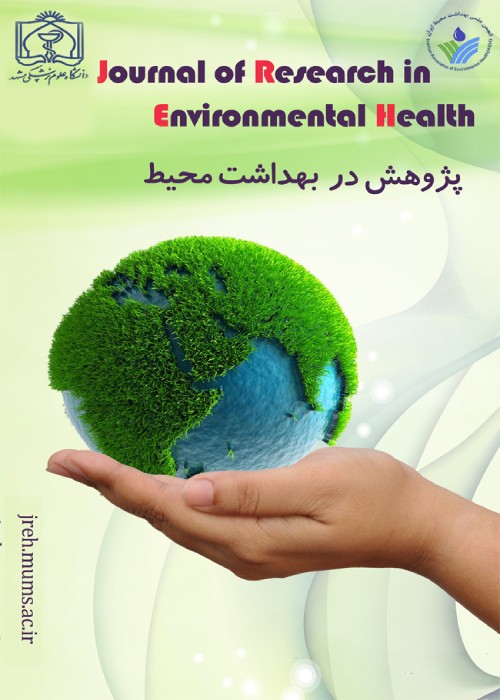A Survay on Dye Removal from Colored Textile Wastewater Using Multi‐walled Carbon Nanotubes and Palm Ash as a Natural Adsorbent
Author(s):
Abstract:
Background And Objective
Textile industry is one of the largest consumers of dyes. Approximately 75% of global dye production is used for dyeing textile, leather, and paper products. Dyes due to their complex structure are mostly stable, toxic, carcinogenic, mutagenic, and resistant to biodegradation; they also can cause allergies and skin conditions in humans.This study aimed to evaluate the efficacies of multi‐walled carbon nanotubes and palm ash for dye removal from textile wastewater in Baluch region of Iranshahr in Iran. Methods
This experimental study was performed on textile wastewater with a dye concentration of 20 mg/L in 2013. The efficacy of multi‐walled carbon nanotubes and palm ash for dye removal at different concentrations, durations (30, 60, 90, 120, and 150 minutes), and pH ranges (3, 5.7, 9, and 11) was investigated. Dye concentration in different samples was measured, using a spectrophotometer at a wavelength of 525 nm. Results
The rates of dye removal using multi‐walled carbon nanotubes at pHs of 3, 5, 7, 9, and 11, dye concentration of 20 mg/L, and adsorbent concentration of 0.05 g/L were 85.5%, 93.4%, 88.4%, 81.3%, and 75.3%, respectively during 180 minutes. The corresponding values for palm ash were 88%, 92.8%, 96%, 92.2%, and 88.7%, respectively. The rates of dye absorption were 1710, 1868, 1769, 1626, and 1506 mg/g for multi‐walled carbon nanotubes and 1763, 1857, 1921, 1844, and 1775 mg/g for palm ash, respectively. According to Langmuir isotherm model, adsorption isotherms were R2=0.876 and R2=0.980 for carbon nanotubes and palm ash, respectively. The maximum removal of chemical oxygen demand (COD) in multi‐walled carbon nanotubes was obtained at pH=5, adsorbent concentration of 0.05, and contact time of 180 min (73.4%). For palm ash, maximum removal was achieved at pH=7, adsorbent concentration of 0.05, and contact time of 180 min (70.6%). Conclusion
Dye removal from textile wastewater can be promoted by increasing reaction time. Dye and COD removal by multi‐walled carbon nanotubes and palm ash was desirable. In fact, in multi‐walled carbon nanotubes, efficacy was desirable at acidic pHs, while in palm ash, neutral pH was considered desirable. Therefore, use of palm ash for the removal of environmental pollutants can be cost‐effective, given its high abundance.Keywords:
Language:
Persian
Published:
Journal of Research in Environmental Health, Volume:1 Issue: 1, 2015
Pages:
10 to 19
magiran.com/p1411096
دانلود و مطالعه متن این مقاله با یکی از روشهای زیر امکان پذیر است:
اشتراک شخصی
با عضویت و پرداخت آنلاین حق اشتراک یکساله به مبلغ 1,390,000ريال میتوانید 70 عنوان مطلب دانلود کنید!
اشتراک سازمانی
به کتابخانه دانشگاه یا محل کار خود پیشنهاد کنید تا اشتراک سازمانی این پایگاه را برای دسترسی نامحدود همه کاربران به متن مطالب تهیه نمایند!
توجه!
- حق عضویت دریافتی صرف حمایت از نشریات عضو و نگهداری، تکمیل و توسعه مگیران میشود.
- پرداخت حق اشتراک و دانلود مقالات اجازه بازنشر آن در سایر رسانههای چاپی و دیجیتال را به کاربر نمیدهد.
In order to view content subscription is required
Personal subscription
Subscribe magiran.com for 70 € euros via PayPal and download 70 articles during a year.
Organization subscription
Please contact us to subscribe your university or library for unlimited access!



